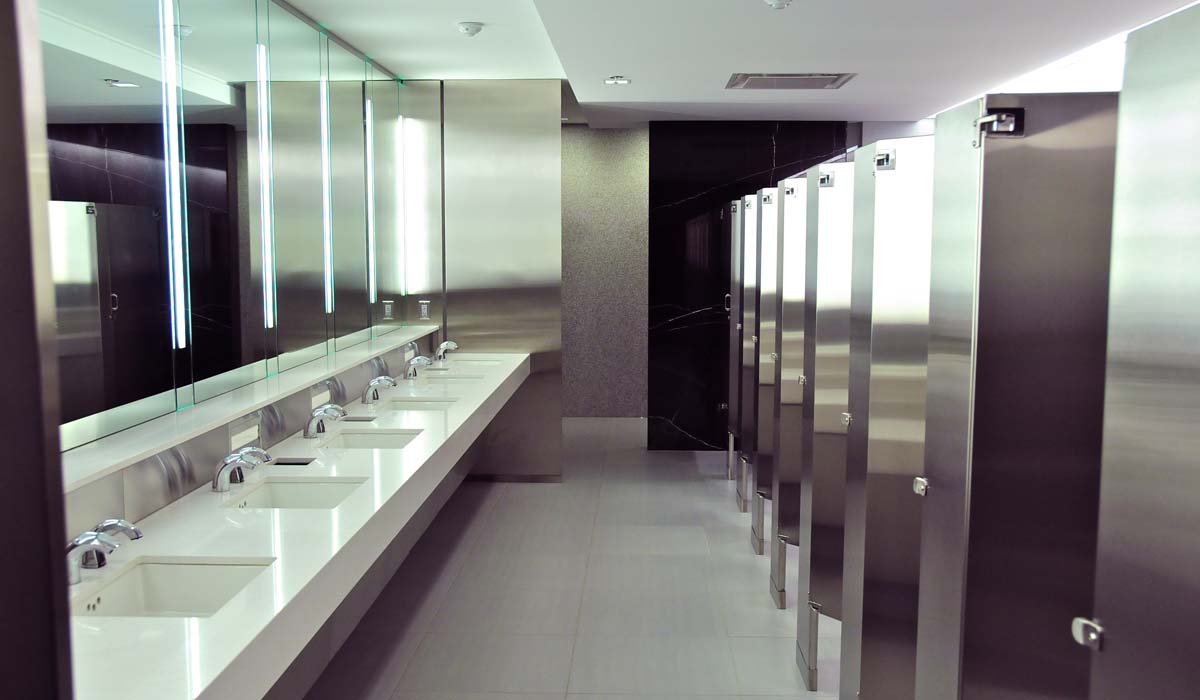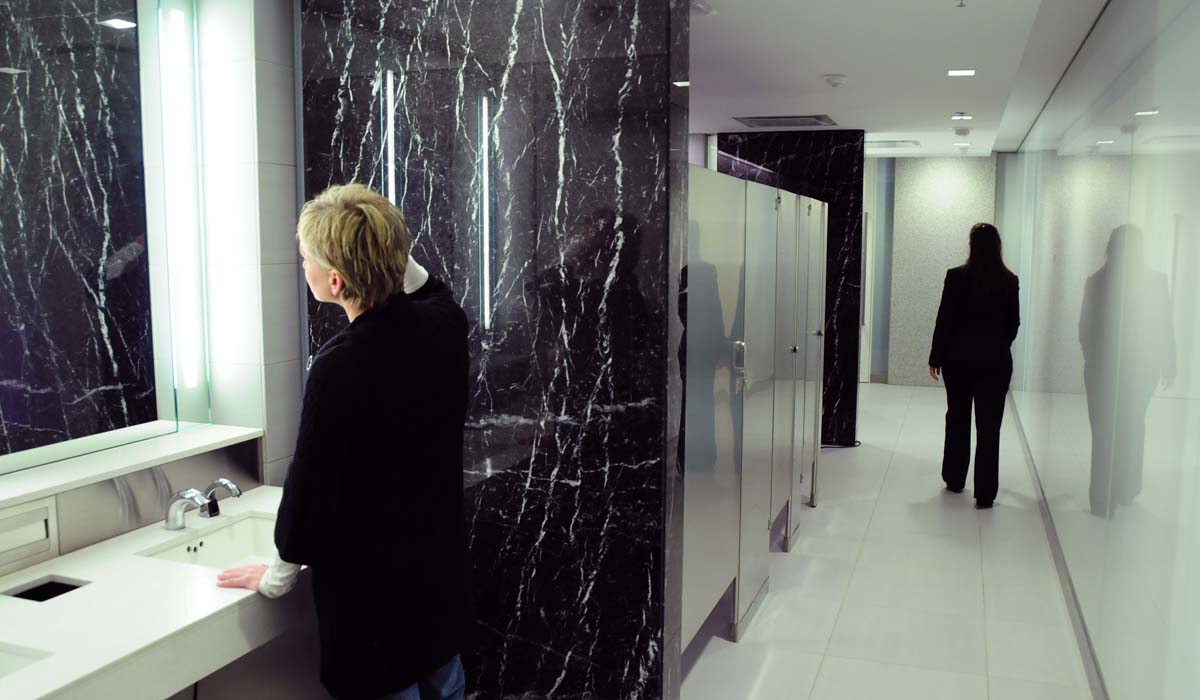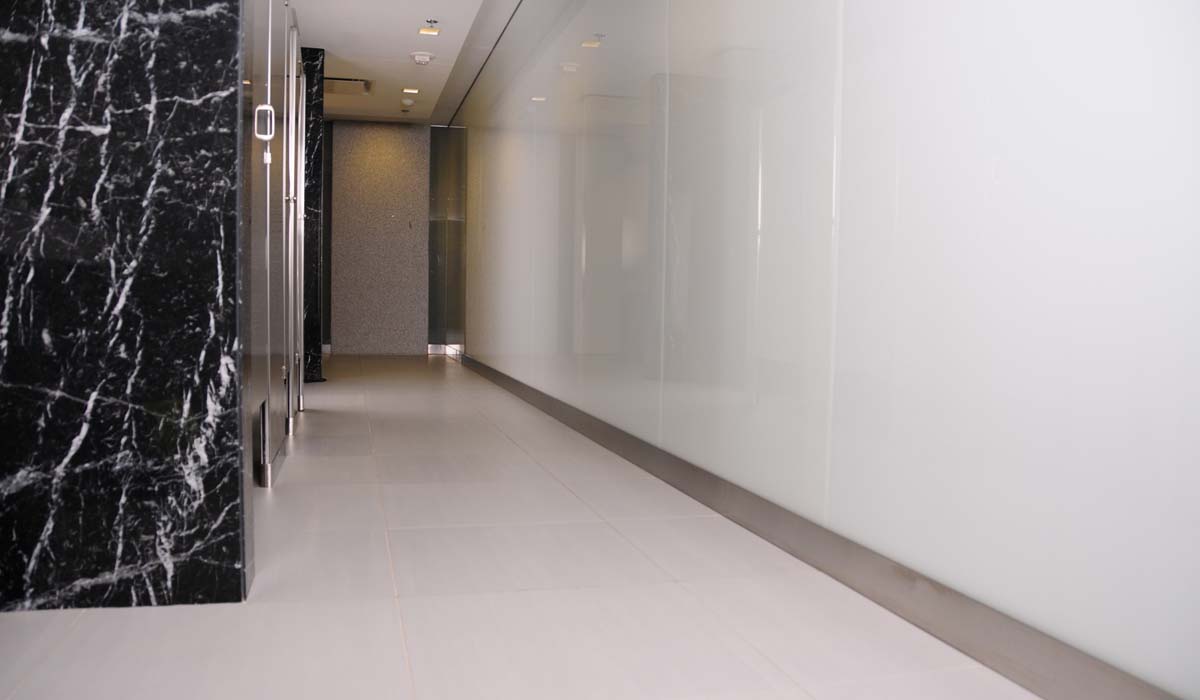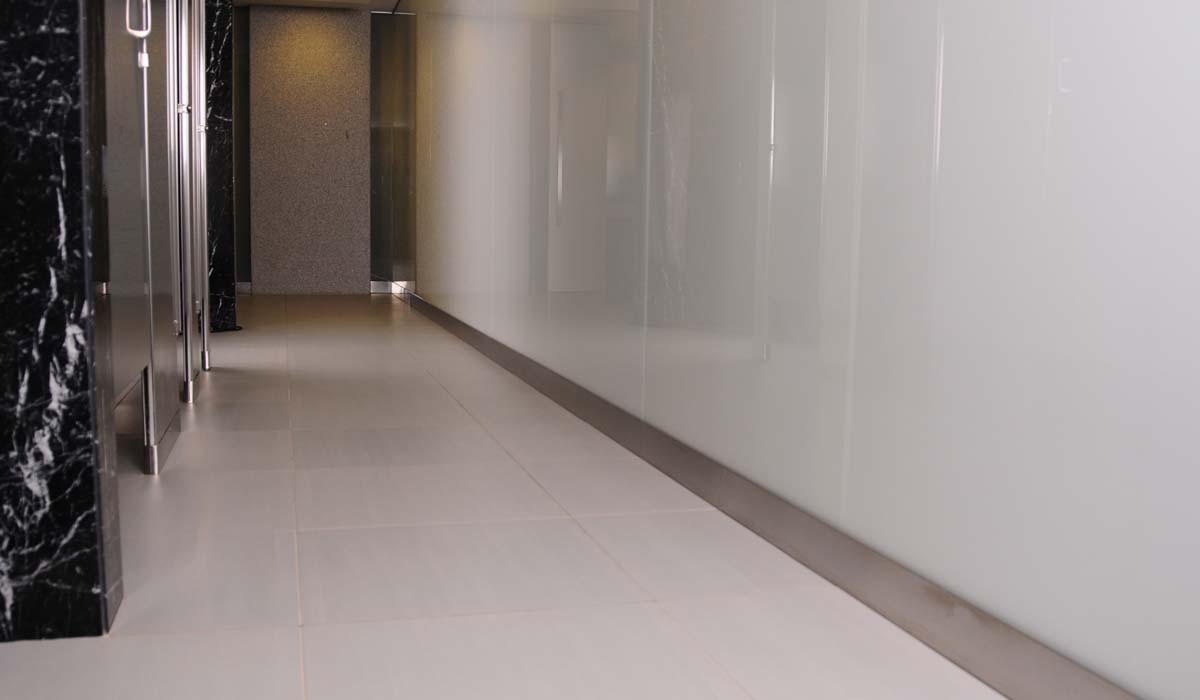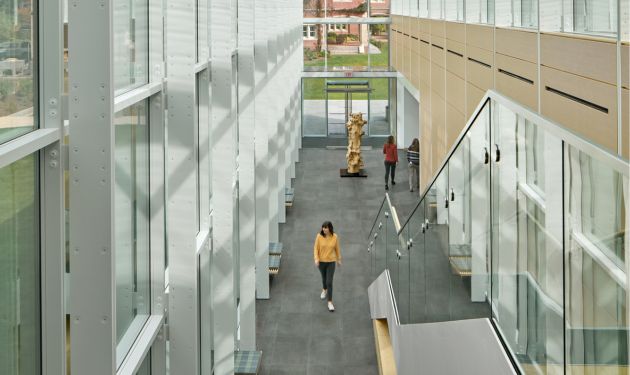
John C. Kluczynski Federal Building
Chicago, Illinois | February 10, 2023
Introduction
Located in the heart of the downtown Chicago Loop, the John C. Kluczynski Federal Building, designed by Mies van der Rohe, has been an architectural icon of the city since its completion in 1974. In 2014—after 40 years of occupancy, the toilet rooms of the renowned building were in need of renovation to incorporate high-level water efficiency and achieve ADA accessibility compliance. The aesthetic objective of renovation was to create a room design that would harmoniously resonate with the original architecture while positioning the facility for its next 40 years.
The Story
A key focus for the renovation was sustainability; all retrofits and new installations would need to conserve energy and water, improve the indoor environment, and incorporate green materials. As part of the complete renovation, the building’s 78 bathrooms would all receive new porcelain fixtures and tile floors and walls. In weighing the decision on what wall and floor tiles would be the most sustainable for the project, the architects at CannonDesign turned to domestic tile manufacturer Crossville.
The CannonDesign team was particularly intrigued by Crossville’s proprietary capability to recycle fired porcelain tile. If Crossville could recycle its own tile scraps that had been through the kiln, could the company do the same with bathroom fixtures that had been in use in the Federal Building since 1974? If so, it could be feasible to harvest the existing tile and porcelain sanitaryware from the 78 bathrooms and ship to Crossville’s manufacturing plants for recycling. Then, the recycled material would be used in the production of new tile to go back into the building—a cradle-to-cradle tile installation that would spare tens of thousands of pounds of waste from entering landfills.
To ensure the system would work, the Crossville team took a toilet from the building and shipped to Crossville for testing. Indeed, the material was suitable for recycling, and, thus, the operation was a go.
“While many other tiles were initially considered, once the concept of the potential repurposing of the porcelain material was confirmed and could be integrated in creating a new product, the selection was clear,” said David Kite of CannonDesign.
The building’s existing tile, toilets, sinks, urinals, and drinking fountains were removed from the building and shipped to Crossville’s plant in Tennessee. There, the approximately 102,000 pounds of harvested porcelain material were ground down into a fine powder for feedstock and manufactured into over 57,000 square feet of beautifully designed, modern tile to be installed on the bathroom walls and floors. The old porcelain sanitaryware that was shipped from Chicago returned to the city transformed into 12” x 24” tile for the walls and 24” x 24” tile for the floors.
“The result was a tile that represented the clean, minimalist aesthetic desired as well as translating a unique sustainable story for the project,” said Kite.
The product that was custom-design and produced for this project ultimately inspired the creation of Crossville’s Shades collection (learn more about this popular line on the product page, here).
Conclusion
Today, the John C. Kluczynski Federal Building is well into its next 40 years of service to the people of Chicago, and, thanks to the commitment of all participants in the building’s renovation, it stands as national example of sustainability in design. Having received LEED-Gold certification, the project is a stellar example of what can be achieved when designers and manufacturers collaborate with excellence in mind.

